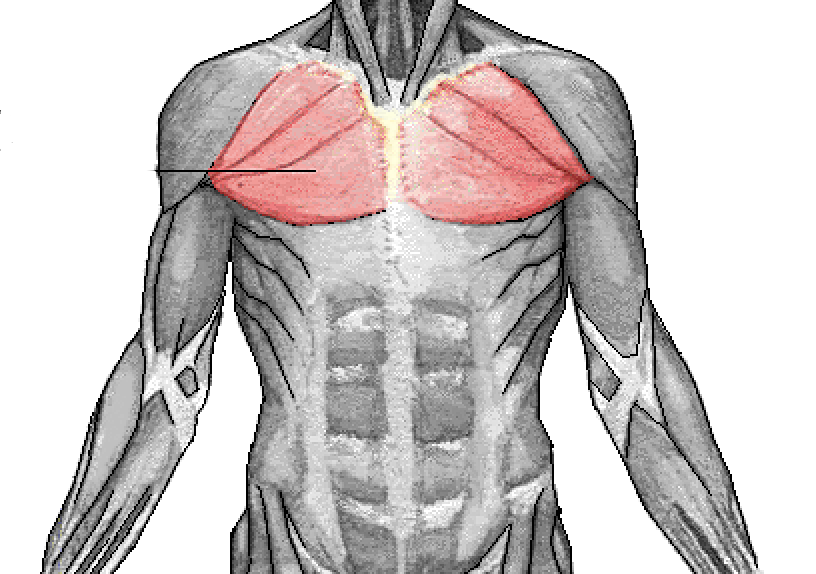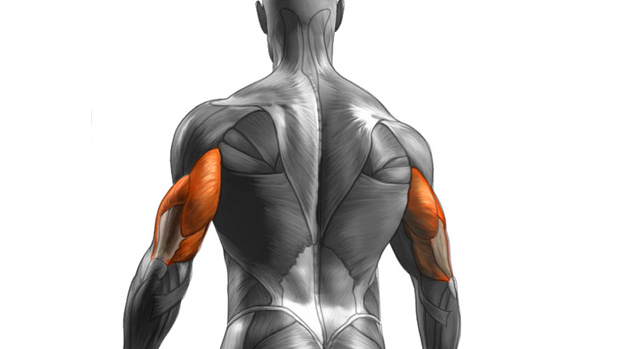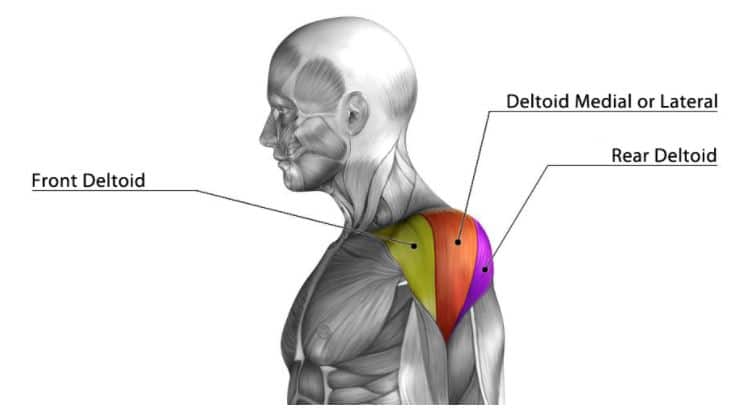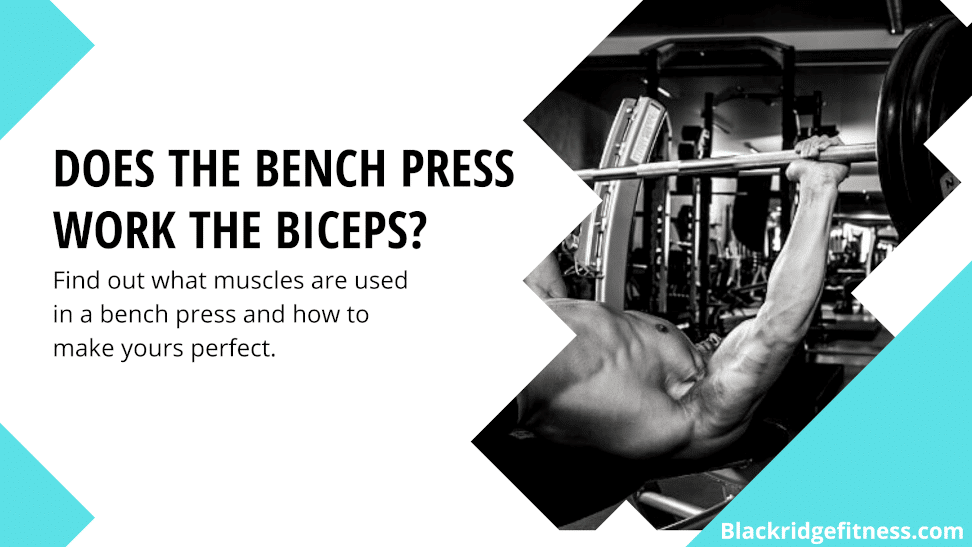Related guides: smith-machine bench press, tate press, close grip bench press
Quick links – Skip to what you’re interested in
- What muscles does the bench press work?
- Primary muscles used during the bench press
- Assisting muscles used in the Bench Press
- How to Perform The Bench Press Correctly
- Step by step how to perform the bench press
- How to avoid injury
- Additional resources
In short, you will not build significant muscle mass in your biceps by doing the Bench Press. However, you biceps act as a stabilisation muscle that helps to perform the press, along with a host of other muscles listed below.
The action of the Bench Press has you performing a range of movements. During the concentric phase of the Bench Press you will be performing both shoulder flexion and elbow extension, whereas on the eccentric portion you perform shoulder extension and elbow flexion.
Flexion of the shoulder is mainly performed by the pectoral and deltoid muscles, however, considering the bicep long head crosses the shoulder joint, this mean that it assists with shoulder flexion.

What Muscles Does the Bench Press work?
Since the bench press is a compound exercise, many different muscles are worked while performing it. Although, when most people train the Bench Press, there are three main muscles that they are usually trying to target.
Primary muscles used during the Bench Press
Pectorals (chest)
These are the large muscles situated on the chest. The main function of this muscle is adduction (pulls towards the midline) of the arm. With a secondary function being the internal rotation of the arm.

Triceps
The triceps is the muscle on the posterior of the arm and is made of three heads (medial, lateral and long head).
Function: the triceps acts to extend the elbow joint and also stabilises the shoulder joint when sustained force generation is required.

Anterior (front) Deltoids
The anterior (front) deltoid rotates the shoulder producing forward flexion, meaning it helps the arm to move forward.

That being said, they are a host of important stabilising muscles that without, you simply wouldn’t be able to perform the exercise. These muscles are:
Assisting muscles used in the Bench Press
- Trapezius (upper, mid and lower)
- Rotator Cuff
- Rhomboids
- Latissmus Dorsi
- Biceps
So, while the Bench press doesn’t directly work the biceps, they do receive some work in the form of stabilising the body during the movement. To perform this exercise effectively you need to create a strong base of support within your body from your arms, core, mid back and shoulders down to your feet and glutes. This explains why some people may believe that the biceps is “worked” during a Bench Press.

Related guides: smith-machine bench press, tate press, close grip bench press
How to Perform The Bench Press Correctly
To be able to perform the Bench Press you will need an Olympic Barbell (which is the standard in most gyms). You must be able to lift the weight of the barbell which is roughly 20kg. That may or may not sound that heavy depending on your ability. If this does sound heavy, then try getting stronger with the press up first.
Let’s briefly take a look at the basics of the bench press before moving on to how to perform it.
How to perform the bench press:
- Lie flat on the bench facing up with your eyes directly underneath the bar.
- Grip the bar with both hands just wider than shoulder-width. You want to make sure that your wrists are directly above your elbows.
- Bring the bar slowly down to your chest as you inhale.
- Push the bar back up, locking out at the elbows and breathe out. You want to imagine trying to get your inner elbows to face each other on the way up while keeping the shoulder back and down into the bench.
How to avoid injury
The bench press is very demanding, especially on the shoulders. Many shoulder injuries are related to poor bench press technique hence why it’s important to go over the additional tips to make sure that you avoid any injuries.
- Unlike most exercises it’s encouraged to have a slight arch in the spine when Benching. You want to keep a slight arch in your mid/lower back when performing the bench press In order to activate the posterior shoulder muscles that will allow you to feel stronger and more stable when pressing
- You want to imagine pinching your shoulder blades together behind you and then depress them down into the bench. Imagine revving a motorcycle throttle with your hands, but try not to bend your wrist, instead try to rev from your shoulder joint and use your lats to squeeze the side of your body next to your ribs.
- Keep your elbows close to your body. Start every rep by bending your elbows and slowly lowering the bar to your chest. Your goal is to keep your elbows as close to your side as possible as you lower the bar, then to press back up powerfully as if you’re trying to push yourself back into the bench.

Additional Resources
- Study: The Effects of Bench Press Variations in Competitive Athletes on Muscle Activity and Performance
- Study: Effect of Barbell Weight on the Structure of the Flat Bench Press
- Related guides: smith-machine bench press, tate press, close grip bench press

Olly is a CIMSPA accredited personal trainer with a BSc degree in sport management from Solent University. He has over 10 years experience helping clients reach their health & fitness goals.

